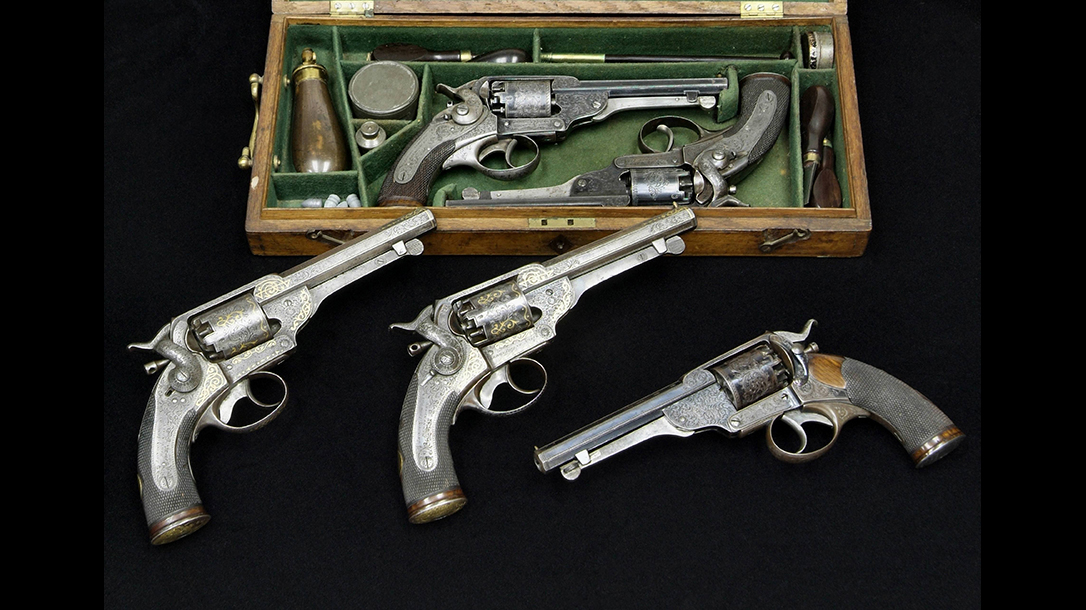Great Britain’s role in America’s early history has been one of both adversary and ally. From the fight for our nation’s independence in 1776 to Great Britain’s attempt to invade the United States during the War of 1812, the British Empire was ever-present. This included the capture and burning of Washington, D.C., in August of 1814. During these times, iconic Civil War revolvers were used, marking the era with their presence. Thus, the British Empire was never too far from the heart of America in war and peace.
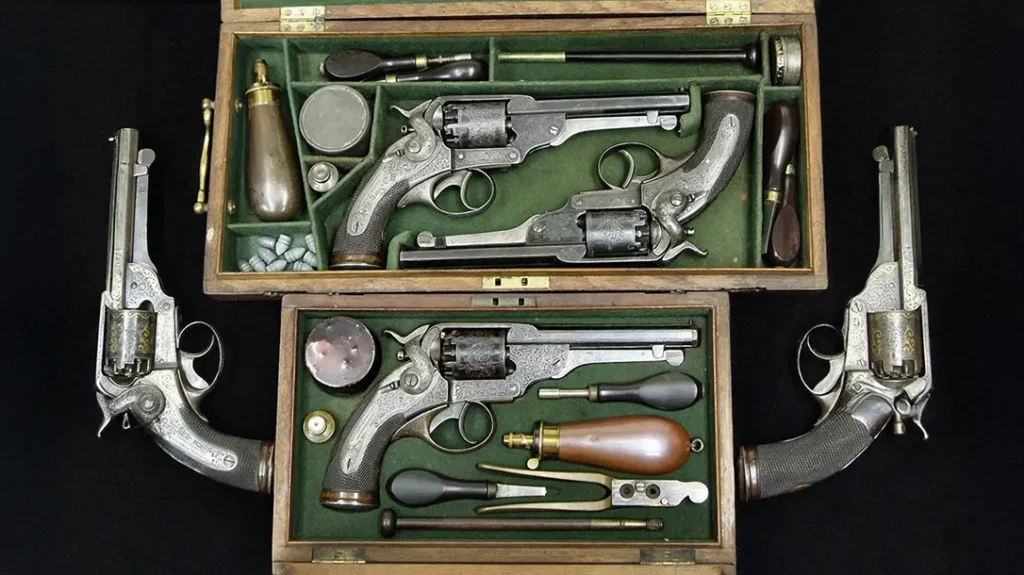
Civil War Revolvers
During the Civil War, both the Union and Confederacy realized early that neither side was adequately armed for a protracted confrontation. This was particularly evident to Jefferson Davis’ government in Richmond, Virginia. Both Lincoln and Davis began sending representatives to England and France. They aimed to supplement the production of American-made firearms, especially rifles and handguns. It was the British who had the most experience in manufacturing muskets and revolvers. Several of England’s leading arms makers answered the call to aid Abraham Lincoln’s besieged government. They also aided the estranged administration of former U.S. Secretary of War Jefferson Davis, now the newly elected president of the Confederate States of America.
Advertisement — Continue Reading Below
Immediately after the April 12, 1861, attack on Fort Sumter by Confederate forces, Jefferson Davis made a decision. He decided to send Major Caleb Huse to Europe to evaluate the purchase and importation of arms to the South. Major Anderson joined Huse in May. As the war escalated in the summer, Davis issued orders for the importation of as many revolvers and muskets as possible. Lincoln had also sent Union officers and purchasing agents abroad. Thus in a way, old enemies and allies were being called upon to cooperate in the affairs of a nation that they had once fought against. The South already had a firmly established relationship with France before 1861. The North had such a relationship to a somewhat lesser degree with both England and France.
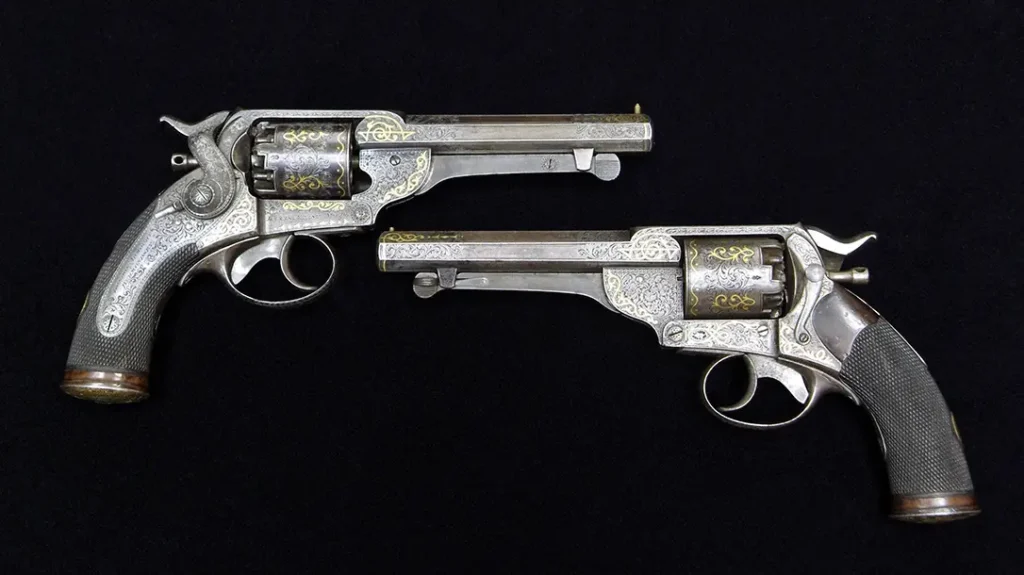
Great Britain Designs
In Great Britain, among the most respected revolvers available were those manufactured by the London Armoury Company. They were designed by James Kerr and Robert Adams, the latter of which designed the famed Adams revolver.
Advertisement — Continue Reading Below
The two men were cousins who had worked at the Deane, Adams & Deane gun factory. When Adams left to start his own company (the London Armoury Company) in 1856, Kerr went with him. He designed new .36- and .44-caliber models that went into production in April of 1859.
The elegantly-styled Kerr sidehammer revolver was to become one of the more prized imported British handguns of the Civil War. The Kerr was an improvement over the Adams revolver. The Union and Confederacy began purchasing Kerr models early in 1861. By November of that year, the Union Army had ordered 1,600 of these revolvers at $18 apiece. Soon after, Confederate arms buyers Major Caleb Huse and James D. Bulloch contracted for all the rifles and revolvers the Armoury could produce. The London Armoury Company eventually become a major arms supplier to the Confederacy, delivering nearly 11,000 Kerr revolvers.
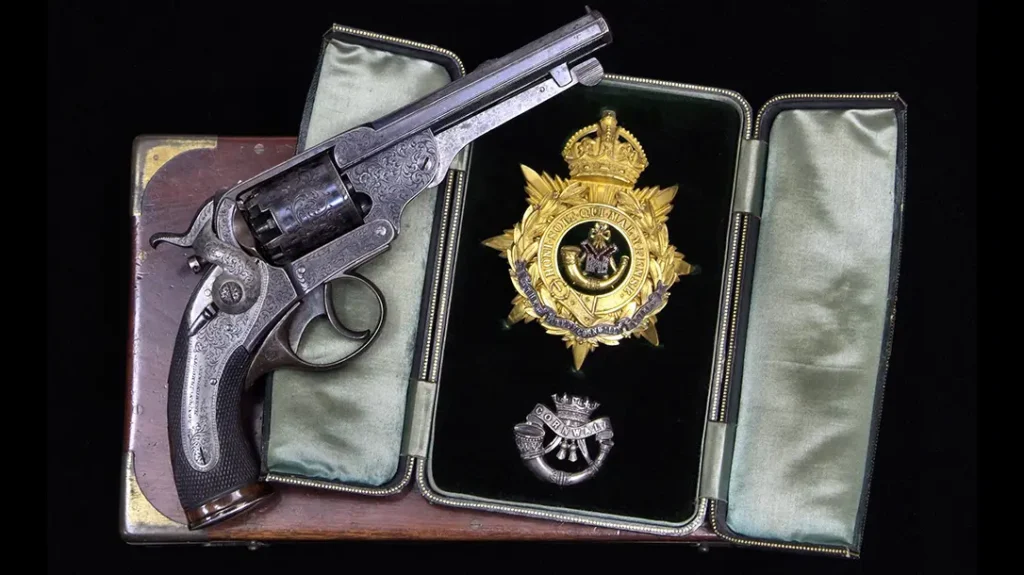
Advertisement — Continue Reading Below
Kerr Revolver Details
Although the James Kerr-designed pistol looked like a variation of the Adams double-action revolver, it was not. The side-mounted hammer had to be manually cocked. Pulling the trigger with the hammer down only rotated the cylinder to the next chamber. One of the more interesting characteristics of the design was the cylinder arbor. It was extracted from the rear (below the hammer) to remove the cylinder. Unlike other revolvers of the day, the Kerr’s lock mechanism was identical to that of the Kerr back-action rifle. The five-shot revolvers had .54 and .80 bores (approximately .36 and .44 caliber). Southern purchases were primarily issued to the Confederate navy.
Kerr revolvers were also carried by several battalions and cavalry regiments. These include the 7th, 11th, 12th, 18th, and 35th Battalions of Virginia, the 24th Battalion of Georgia, and the 8th Texas cavalry. Kerr also manufactured a true double-action revolver. However, most guns purchased by the Confederacy were of the single-action type. It is noted that 7th Cavalry Captain Tom Custer—Lieutenant Colonel George Armstrong Custer’s brother—had carried a Kerr revolver at the Battle of the Little Bighorn on June 25, 1876.
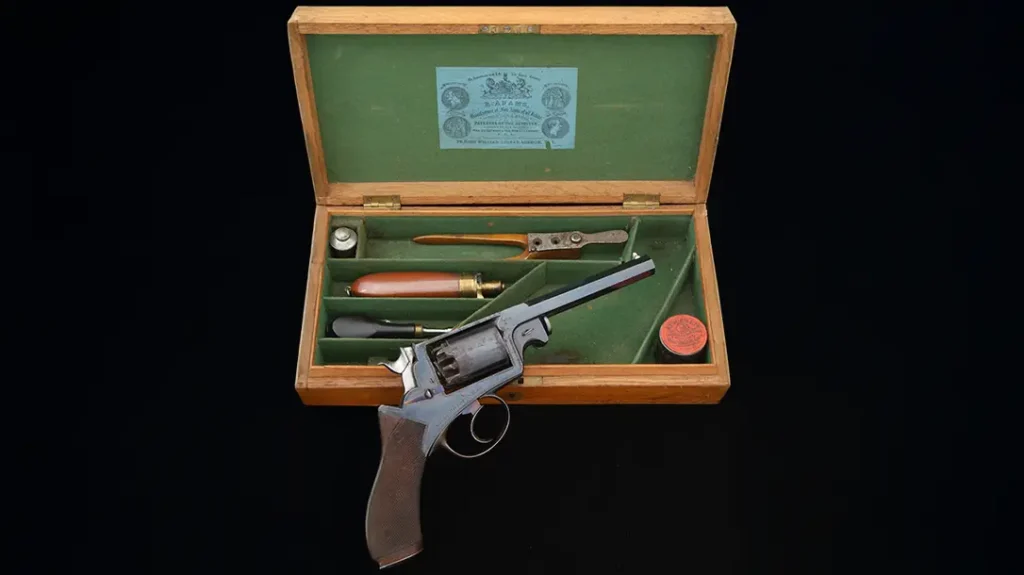
Advertisement — Continue Reading Below
The Adams Design
The British Adams revolver was a true double-action (self-cocking) percussion pistol. Robert Adams’ design was manufactured by various companies. These included Beaumont-Adams, Deane, Adams & Deane, Adams & Tranter, and other Adams patent licensees. This took place in London, Birmingham, Wolverhampton, England, and Liège, Belgium. The Massachusetts Arms Company also licensed a copy of the smaller .31-caliber Beaumont-Adams pocket models for production in the U.S. during the Civil War. Along with this, they manufactured a limited run of 500 guns chambered in .36 caliber for the U.S. Ordnance Department. The department was already familiar with the Adams design, having ordered 100 Adams models chambered in .36 caliber in 1857.
Like other British revolvers of the period, the Adams was a five-shot pistol. It was not a six-shooter like American revolvers from Colt and Remington. The original Adams patent revolvers had two other disadvantages. They could not be cocked or fired in single action and there was no loading rammer. The Adams-Beaumont model addressed both issues. Adams and Lieutenant Frederick Edward Blackett Beaumont patented it in 1855. The new models added a thumb spur to the hammer. Thus, the guns could be fired in single action due to an altered mechanism. On the left side of the barrel was a Kerr-style bullet rammer.
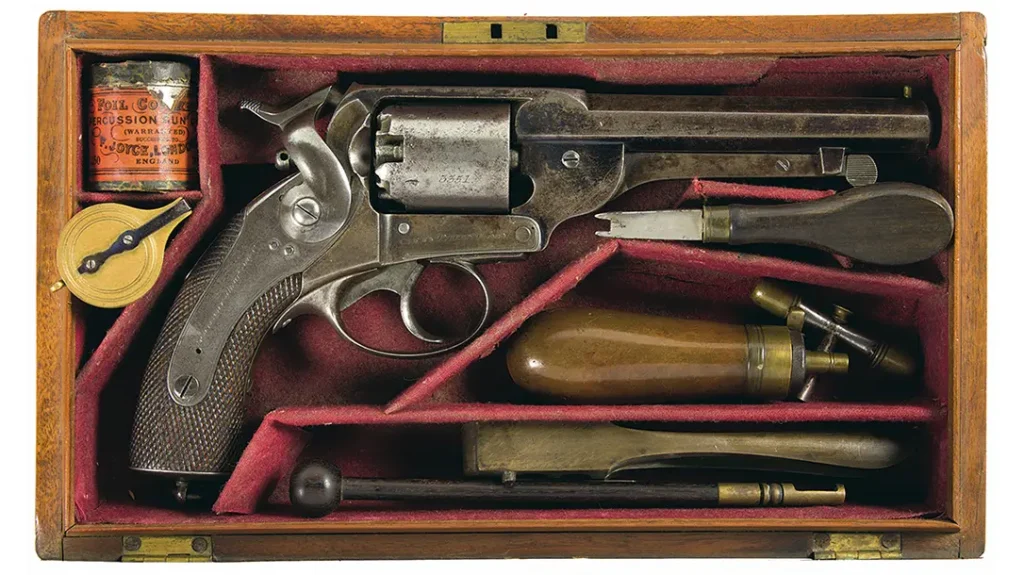
Advertisement — Continue Reading Below
Civil War Revolvers
These represent the majority of Adams patent revolvers imported by the Union and Confederacy. A good number of them, along with Kerr revolvers, went West with their owners after the war. Thus, they became a part of the American frontier.
Advertisement — Continue Reading Below
